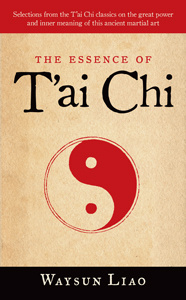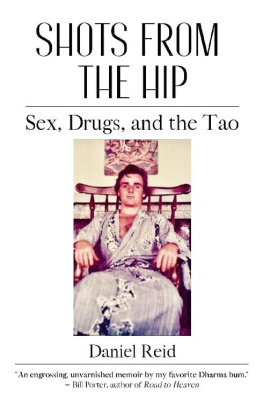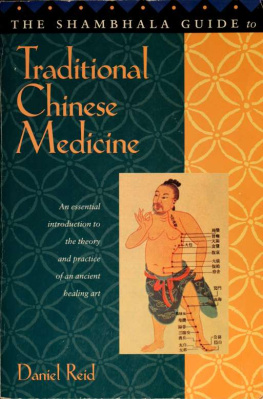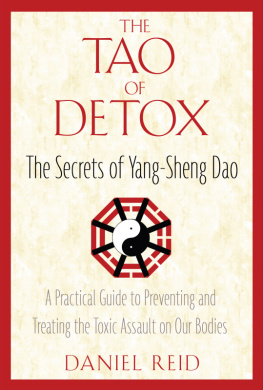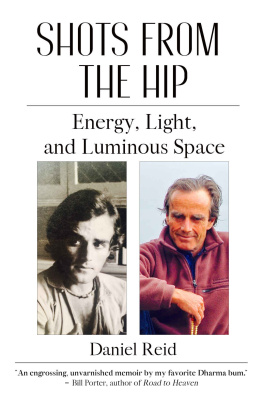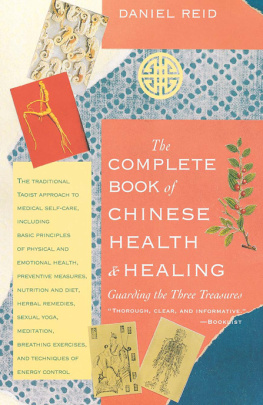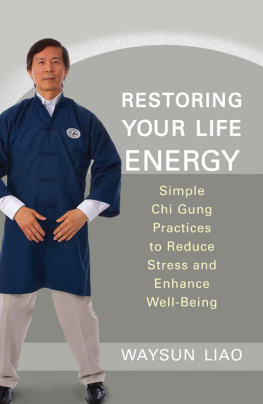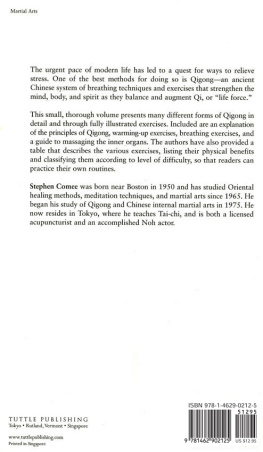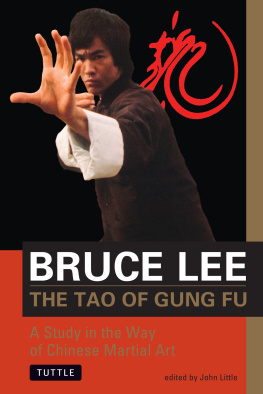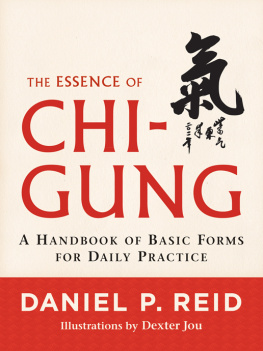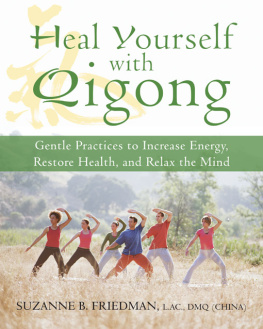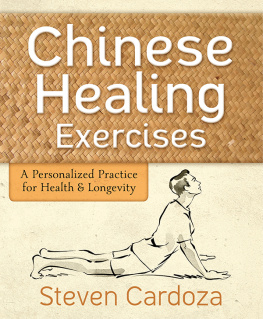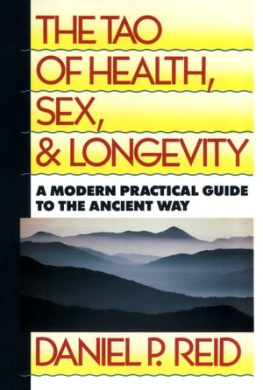Virtually everything one needs to know about the practice of chi-gung.
NAPRA Review
ABOUT THE BOOK
Chi-gung, which literally means energy work, is a system of cultivating health, vitality, and longevity that is based on the fundamental principles of Taoism and the laws of nature. Practiced by the Chinese for thousands of years, chi-gung works with the energy found in all living things to help rid the body of the imbalances that sap our strength and give rise to disease. The simple, meditative movements, breathing exercises, and massage techniques that are the basis of chi-gung can be practiced by anyone, regardless of age or physical fitness.
DANIEL REID is a leading Western authority on traditional Chinese medicine and Taoist healing practices and has studied and practiced Chinese medicine for over twenty years. He is the author of TheComplete Book of Chinese Health and Healing (Shambhala, 1994).
Sign up to learn more about our books and receive special offers from Shambhala Publications.

Or visit us online to sign up at shambhala.com/eshambhala.
A Complete Guide to Chi-Gung

Daniel Reid
Illustrations by
Dexter Chou

Shambhala
Boston
2011
Shambhala Publications, Inc.
Horticultural Hall
300 Massachusetts Avenue
Boston, Massachusetts 02115
www.shambhala.com
First published in Great Britain
by Simon & Schuster Ltd, a Viacom company, 1998.
1998 by Daniel Reid
Cover art: Calligraphy by John Stevens
All rights reserved. No part of this book may be reproduced in any form or by any means, electronic or mechanical, including photocopying, recording, or by any information storage and retrieval system, without permission in writing from the publisher.
THE LIBRARY OF CONGRESS CATALOGUES THE HARDCOVER EDITION OF THIS BOOK AS FOLLOWS:
Reid, Daniel P., 1948
A complete guide to chi-gung/by Daniel Reid.
p. cm
eISBN 978-0-8348-2374-7
ISBN 978-1-57062-337-0
ISBN 978-1-57062-543-5 (pbk.)
1. Chi kung. 2. Exercise therapy.
3. HealthReligious aspectsTaoism. I. Title.
RA781.8.R45 1998 98-5002
613.71dc21 CIP
This book is dedicated to my father Daniel Reid Sr.,
who might still be alive and well today
had he practised chi-gung,
and to my father-in-law Chou Yun-yu,
who is because he does,
and
to everyone everywhere who cultivates the energy of life
with wisdom and compassion.

Acknowledgements
I wish to acknowledge and thank the following individuals for their encouragement, contributions, and support in the completion of this book: Lo Teh-hsiu, chi-gung master from Taiwan, for his illuminating insights and information on the theory and practice of chi-gung; Howard Brewer, for introducing me to chi-gung and chi-gung teachers twenty years ago in Taiwan, and for coaching me along all these years; Dexter Chou, for once again creating the illustrations for my book exactly to specifications; Peter Turner, my editor at Shambhala, for his meticulous editing; Moriah St Clair, for demonstrating the true healing power of universal energy, and elucidating its functional link with wisdom and compassion; Chou Tung Reid, my partner in chi-gung and daily life, for her astute assistance interpreting esoteric Chinese materials, and her bright companionship on the path of practice. Ingrid Connell and all the other fine editors at Simon & Schuster in London for their long-standing faith in my work and their excellent editorial attention to every aspect of my manuscripts.

Contents

For the convenience of Western readers with no previous background in Chinese studies, I have followed the Yale University system of romanization for spelling most of the Chinese terms used in the book. Although the Yale system is seldom used today, it nevertheless remains the least confusing and the most accurate method of spelling Chinese words for Western readers, because it cleaves closest to standard English phonetics. For formal names, such as historical figures, dynasties, texts and so forth, I used the old WadeGiles system of spelling, which remains the conventional practice among more traditionally minded Western sinologists.
Recently, the so-called pin-yin system of romanization used in China since the Cultural Revolution has spread to the West, misleading most Western readers, as well as many newscasters, into mispronouncing the Chinese terms that appear in the media. For example, words pronounced jou are inexplicably spelled zhou, the word shiao is illogically spelled xiao, tsai for no rhyme or reason is written cai, chin is spelled qin, and chi-gung is written qigong. Theres no way on earth the average Western reader can fathom the proper pronunciation of Chinese words from such a spelling system. Therefore, to avoid confusing my readers with spelling that defies the standard phonetic conventions that evolved with the Roman alphabet, not only in English but in all languages that use this alphabet, I never employ the pin-yin system to romanize Chinese words.
In my previous books, I spell the word chi as chee, because that is precisely how it is pronounced in English. However, since this book is devoted entirely to the subject of chi-gung, I do not wish to further confuse matters by creating my own spelling for this key word, so I hereby conform to academic convention by using the relatively logical Yale system to spell chi and chi-gung, with the explicit reminder that the proper pronunciation is chee, as in cheek without the final k.

For more than 5000 years, chi-gung was one of the best-kept secrets in the world. Practised quietly behind the high walls and barred gates of ancient Buddhist monasteries and remote Taoist hermitages, in the private villas of the rich and influential, and the guarded palaces of emperors, chi-gung became Chinas most esoteric tradition. It was an art personally handed down through oral transmission, from reticent masters to select disciples in unbroken lineages spanning thousands of years. Those fortunate enough to receive the secret transmission became members of an exclusive fraternity of practitioners known simply as nei-jia, literally the internal family, an informal confederation of chi-gung adepts that included princes and poets, monks and martial artists, warriors and wise men, all of them dedicated to cultivating the Tao of Life (yang-sheng dao) by working with universal energy. The few classical texts in which information about chi-gung was recorded for posterity were deliberately written in such vague, obscurely encoded terms that only well-practised initiates could possibly decipher their true meanings, and therefore these texts were circulated and understood only among the inner circles of the chi-gung world.
Next page
